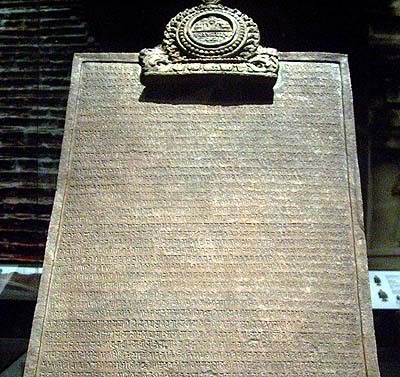In his biography, Acharya Dipamkara Shrijnana wrote about his journey to Suvarnadvipa and his meeting with Acharya Dharmakirti which took place in 1013 CE.
“In 1012, Dipamkara, in the company of some merchants, (from India) embarked for Suvarnadvipa in a large vessel. The voyage was long and tedious, extending over several months, during which the travellers were overtaken by terrible storms … At this time Suvarnadvipa was the headquarters of Buddhism in the East, and its High Priest (Acharya Dharmakirti) was considered the greatest scholar of his age…” [Alaka Chattopadhyaya (1999): Atisa and Tibet].
“… Immediately after crossing the great ocean, I (Dipamkara) went to the site of Golden Reliquary (Caitya or Stupa) of Sukhagati … and met six meditator monks disciples of teacher Suvarnadvipi (Dharmakirti) … The caitya was surrounded by the forests of Suvarnadvipa in the north, to the south of the beautiful lotuses, by thick bamboo forest in the west and by the swamp in the east …”
“There we lived with them for fourteen days. Thereupon, the monks went to the noble teacher Suvarnadvipi and pleaded…” Then they went to meet him … From far away, we could see them standing in line to receive us … so spaced that they were neither too close nor too far from one another, they walked in line like a colourful rainbow to the place where Guru Suvarnadvipi dwelt … I prostrated myself at his feet … then the residents and visitors together went to the courtyard of the monastic community where an elder monk was in the midst of teaching a group of monk … He (guru Suvarnadvipi) thus perfectly conferred this teaching (fifteen sessions of the Abhisamaya-alamkara) upon me. Following this, I set up residence in the palace of silver parasols and spent my time pursuing study, reflection and meditation.” [Thupten Jinpa (2006): Mind Training – The Great Collection].
 Bahasa
Bahasa
 December 11th, 2010
December 11th, 2010  SUDIMUJA
SUDIMUJA 